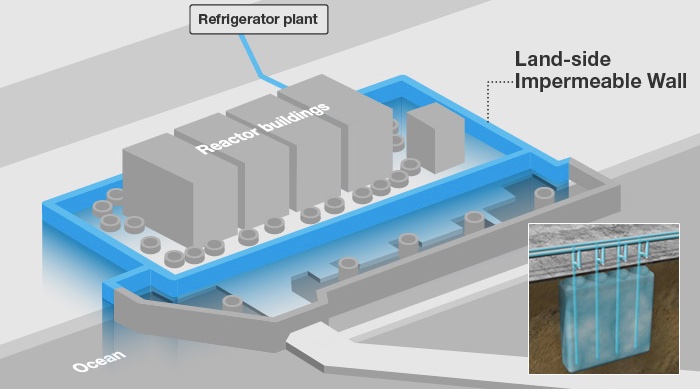
The ice wall is designed to contain radioactive water that is leaking from cracks in the basement of the reactor units. This water seeps into the groundwater, traveling far beyond the power plant’s site. The problem is so severe that nearby farmers have been using polyester soil to avoid using the contaminated water. Japan is aware of the seriousness of this contamination and has struggled in its attempts to contain the leaking radiation. Earlier this year, the country tried unsuccessfully to contain the radioactive waste by using robots to remove melted fuel rods that are the source of much of this radiation. This earlier plan failed when the robots sent to retrieve the rods died in transit when their wiring malfunctioned due to the high levels of radioactivity in the water.
To build the ice wall, Japan has been installing refrigeration pipes that extend 30 feet underground. These buried tubes will be used to freeze the soil and create a 1.5-km wall around the four reactors and turbine buildings. Construction of the ice wall began in 2014 and is nearing completion, with 95 percent of the wall ready to be activated. The remaining 5 percent will be approved after the performance of the wall is assessed following activation of this first stage.
If it works as expected, ground water inflow will be reduced by 50 percent. The refrigeration system is projected to cost approximately 35 billion yen (US$312 million) when it is finally completed.
This isn’t the first time an ice wall has been used to contain the movement of groundwater. The technique is commonly used in mining and other excavation projects but on a much smaller scale. Japan’s ice wall will be the largest to date and has never been tested at this level. How effective it will be remains to be seen. “Its effect is still unknown because the expected outcome is based on simulations,” said TEPCO accident response official Toshihiro Imai.




